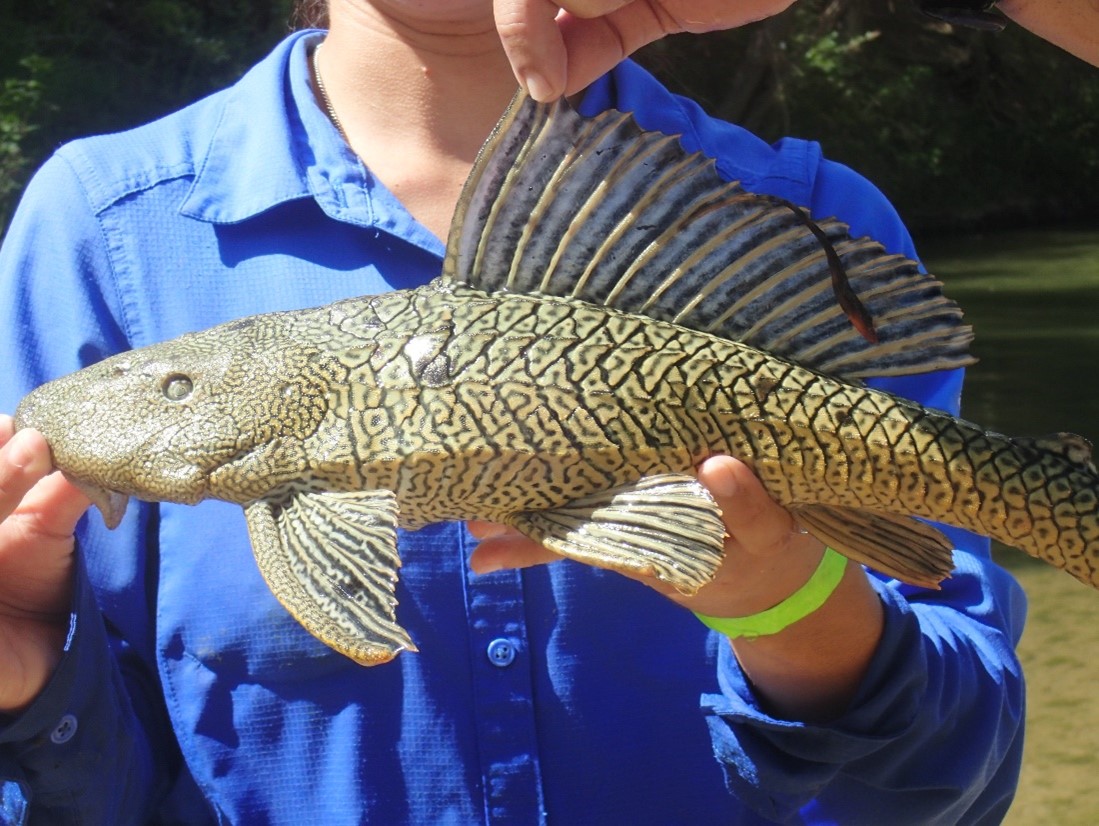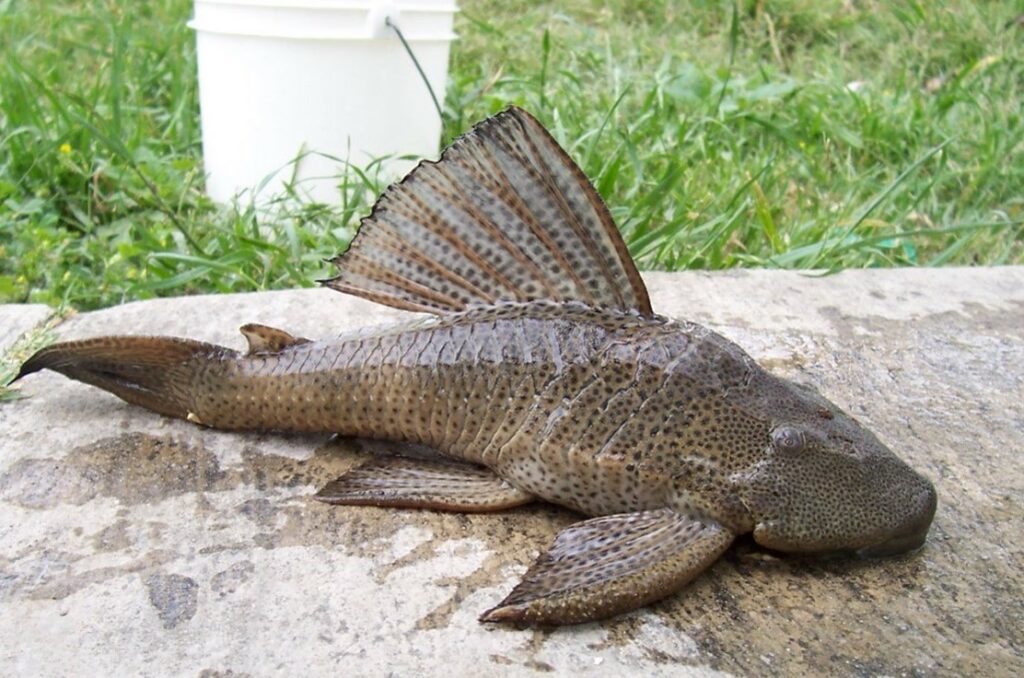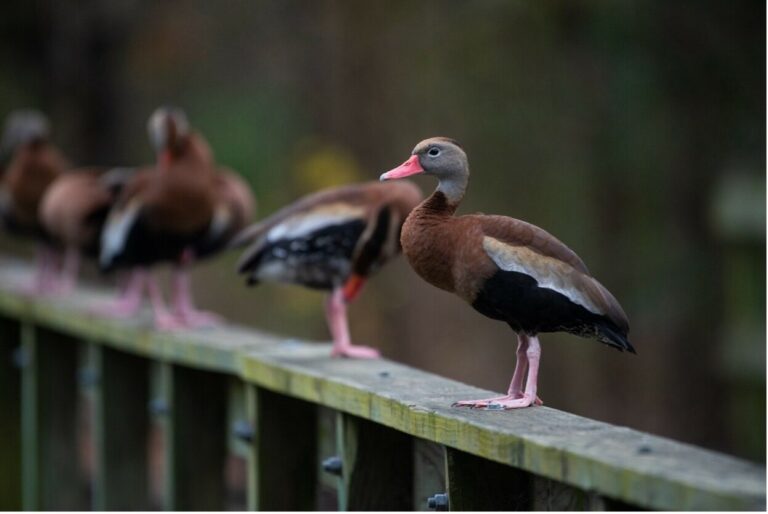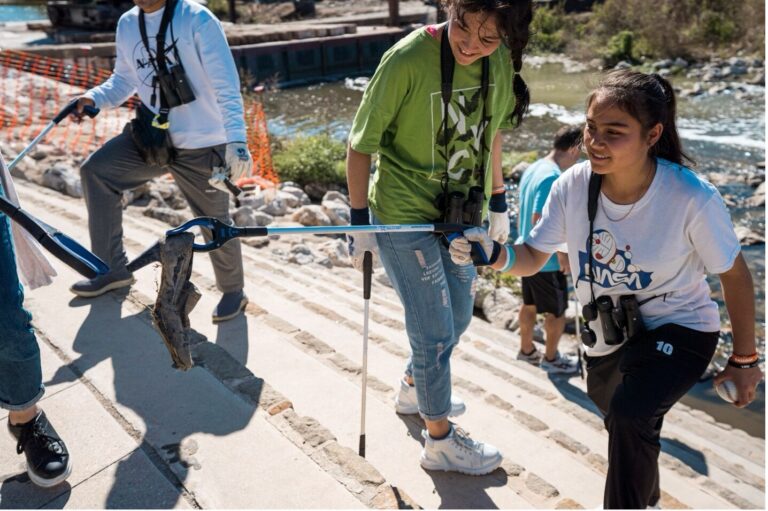Plecostomus (Hypostomus Plecostomus)
Un ecosistema es una comunidad interconectada de seres vivos, como plantas, animales y microbios, y el entorno no vivo, como el aire, el clima, el agua y los minerales que lo rodean. La San Antonio River Authority (Autoridad del Río) es proactiva cuando se trata de proteger los recursos naturales del Cuenca del río San Antonio, y el personal ha trabajado arduamente para abordar las especies invasoras como parte de nuestro compromiso con seguro, limpio, y agradable arroyos y ríos.
Los organismos que evolucionan juntos en el mismo ecosistema participan en un sistema de controles y equilibrios que mantienen bajo control el número de su población. Este sistema natural impide que cualquier especie se haga cargo. Sin embargo, cuando se introducen especies no nativas en un nuevo entorno, no tienen depredadores naturales en ese ecosistema. Esto conduce a un aumento dramático en el tamaño de su población, dejando a los organismos nativos sufriendo o incluso muriendo al verse superados por recursos como alimentos y espacio. Las especies no nativas que tienen efectos perjudiciales en su nuevo entorno se denominan especies invasivas.
Obtenga más información en el blog de hoy sobre dos especies invasoras que están causando daños en el río San Antonio y lo que puede hacer para ayudar a prevenir la propagación de estas especies en nuestras vías fluviales.
Peligros del vertido de acuarios
Imagínate que estás dando un tranquilo paseo por la Alcance del Museo del Paseo del Río de San Antonio, mirando al agua para ver un pez nadando. Tu mirada se detiene en un pez justo debajo de la superficie del agua que parece estar aferrado a la pared de concreto del canal por su boca. ¡Te has topado con un bagre acorazado, un pez invasor originario de América del Sur! ¿Cómo terminó esta criatura a miles de kilómetros de su área de distribución nativa y cómo afecta esto al ecosistema del río San Antonio?
A menudo, los aficionados a los acuarios compran especies no autóctonas en tiendas de mascotas para los acuarios de sus casas. Desafortunadamente, estos bichos pueden superar rápidamente sus tanques. En lugar de devolverlos a una tienda de mascotas o realojarlos, algunos propietarios de peces optan por liberar estos organismos no nativos en los arroyos locales y en el río San Antonio. Si bien pueden tener buenas intenciones, estos ciudadanos, sin saberlo, están causando estragos en el ecosistema del río San Antonio.

Dos de esas especies invasoras que han afectado negativamente el ecosistema del río San Antonio son el plecostomus (Hypostomus plecostomus) y el bagre vermiculado (Pterygoplichthys disjunctivus), ambos comúnmente conocidos como bagre acorazado. Estos peces se esconden en las orillas de los ríos, lo que provoca erosión e incluso el colapso de las orillas. Su actividad de excavación aumenta la turbidez (o oscuridad) del agua, lo que a su vez aumenta la temperatura del agua, lo que lleva a una disminución en la cantidad de oxígeno presente en el agua para sustentar a los peces nativos, los mejillones de agua dulce y los insectos acuáticos. A menudo se puede encontrar bagre acorazado comiendo algas que se han acumulado en las paredes de concreto del canal que bordean el tramo del museo del río San Antonio. El hambre insaciable de algas de H. plecostomus incluso se ha asociado con una disminución en el número de apisonadores centrales (Campostoma anomalum), un pez que se alimenta de algas y es nativo del río San Antonio. Estos bagres acorazados, así como otra especie invasora llamada caracol manzana (Pomascea sp.), causan graves daños a los ecosistemas en los que se introducen, en detrimento de todas las especies nativas que nos esforzamos por proteger.
Así como estas especies invasoras fueron introducidas en nuevos entornos a través de las acciones de las personas, sólo mediante la intervención humana podemos reducir el impacto de estos organismos no nativos en el río. Primero y ante todo, nunca tires tu acuario ¡en arroyos y ríos! Llene sus peceras con animales y vegetación nativos y asegúrese de aislar cualquier organismo nuevo que compre antes de agregarlos a su pecera para reducir el riesgo de parásitos u otros polizones que puedan estar escondidos en su nueva compra. Continúe educándose a sí mismo y a otros sobre las amenazas que las especies no nativas representan para el ecosistema del río San Antonio. También puedes rInforme cualquier avistamiento llamando gratis al (866) 345-7272 o Contáctenos a través del sitio web de la Autoridad del Río. Su ayuda para informar sobre esta especie invasora ayudará a nuestro Equipo de Ciencias Ambientales a estudiar más a fondo y eliminar la presencia de esta especie no nativa a lo largo de nuestros arroyos y ríos. Finalmente, si desea participar en esfuerzos futuros para mitigar el impacto que las especies no nativas tienen en los arroyos locales y el río San Antonio, regístrese y únase al grupo. Guerreros del río.






